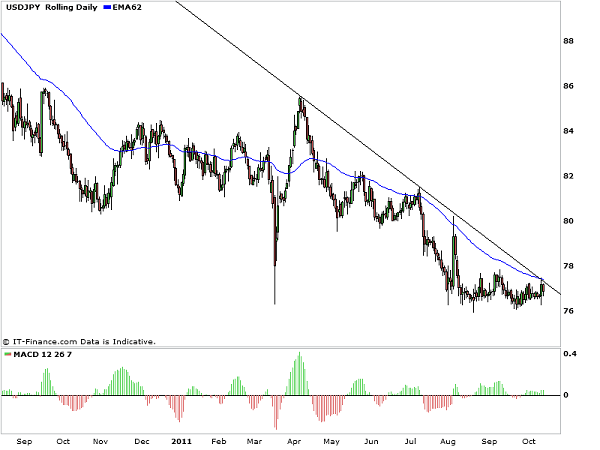The heavy selling of the euro over the past few weeks seemed to have found a level of support today as traders sought to gain from the discounted rate versus the dollar and instil a degree of confidence in the European Commissions road map to Eurozone stability. The bounce, however intermediate, looks set to be with the heavily-beaten currency for at least the remainder of the week according to some analysts. Its status as a risky long hold has been reversed by the shift in sentiment and the general understanding that, however bad the situation, the powers that preside over the day-to-day functioning of the euro have at the very least a plan to resolve the problems.
How successful these plans may be remains to be said, however, the current situation on several of the correlated pairs, including the AUD and the Swiss franc look decidedly bullish as the somewhat fickle markets look to gain from the surge in confidence amongst investors. One of the most obvious of these is the AUD/USD pair which, having been under significant selling pressure since the Australian National bank hinted at the possibility of future rate cuts alongside the rise in gold, had fallen significantly before bouncing and testing the influential 62 EMA today. Whether it can push beyond this level in over the next few days will be an important signal of the serious determination of investors to reassert a desire for riskier assets.

To reinforce the weakening of the USD, the technical perspective of several USD pairs is also looking bearish against the greenback. This can be most obviously seen in the USD/JPY pair which appears to have reached the top of its downward trend and looks to be an ideal position to continue lower. The fact that the USD/JPY has been in a downtrend which, to Elliot wave analysts, would appear to be nearing the end of its fourth wave shows that there may be potential for it to move lower. Combined with this, the small inside bar candlestick formed today off the back of yesterdays trendline test would suggest that the selling pressure may be too much for it to break the bears back.
Many USD pairs will look to the EUR/USD for guidance, as it has clearly been dominating the fundamentals of currency speculation over the past weeks. As it rises, however, it is clear that it is going to heading into a particularly congested area around the 1.4000 area. This area is emphasised by the lows formed in May and July of this year. Price failed twice to push below this level before eventually succumbing to the major falls experienced in September. Technical traders are acutely aware that such strong support, once broken, can offer significant future resistance. When it eventually reaches this area it will be interesting to see whether it manages to break through this and could be a good indication as to whether the Euros bullish bounce is sustainable.
Comments (No)